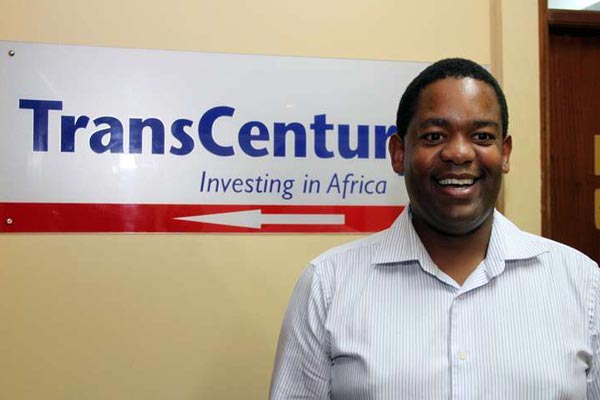Kenya’s corporate landscape has in recent weeks been gripped by the changing fortunes of investment firm TransCentury (TCL) and the unexpected exit of its chief executive Gachao Kiuna three weeks ago.
The company, whose exceptional success popularised investment clubs (commonly known as chamas) in Kenya, has recently navigated turbulent waters characterised by a dreadful plummeting of its share price, and is now facing a life- and-death situation with the impending maturity in March of the $80 million (Sh8.2 billion) convertible bond it issued in 2011 through its wholly-owned subsidiary, TC Mauritius.
A comparison has been made between the apparent dwindling TCL’s fortunes, christened a fading comet, and that of its anchor shareholders, and the rising fortunes of the Chris Kirubi-led Centum Investments — and whether Mr Kirubi is now the consummate corporate deal-maker in town.
Let us start by asking whether there is any truth in the dominant narrative that patronage and politics has a bearing on the fortunes of both firms. The answer is no.
This is because TCL is simply the victim of a series of strategic missteps, internal and external, it made in the past starting with the way the bond proceeds were used — having been borrowed offshore at an annual interest rate of six per cent with an additional six per cent interest due upon maturity in March 2016.
This being a convertible bond, the holders had the option of staying in to maturity, or opting for a conversion to equity through the creation of additional 6 million shares, equivalent to 36.3 per cent stake in the firm.
That stake was worth Sh6 billion in Year 1 and Sh7.5 billion upon maturity in Year 5.
However, certain conditions had to obtain for the conversion to happen at fair-value. This is where TCL’s fortunes and hedging went wrong – beginning with the tanking of the share-price from the projected worst-case scenario of Sh40-50 and depreciation of the shilling to levels unanticipated.
The prospectus pegged the redemption throughout the 5-year term at Sh80 to the dollar (the shilling is currently trading at Sh100 to the dollar) – a mark-up of Sh20 from the anticipated rate.
Very few bond-holders took the conversion option and are still holding onto a bond that at worst-case scenario may be toxic.
Then there was the matter of the company’s valuation during its entry by introduction at the Nairobi Securities Exchange (NSE).
Many independent analysts hold the view that at Sh50, TCL’s share price was highly inflated. The bourse has since been uncharacteristically brutal on TCL, even with the bear-run.
The company’s share price has plummeted by a margin of 83 per cent from the initial Sh50 to the current price of Sh8.65. Even more critical to the company’s dwindling fortunes is the fact that TCL made investments that did not make the expected returns.
A significant proportion of the bond proceeds (Sh2.2 billion) was used to acquire an initial stake in the Kenya-Uganda Rift Valley Railways (RVR) concession that later rose to 34 per cent. The investment was made as part of the $237 million turnaround plan agreed by shareholders.
But boardroom squabbles, aging infrastructure, dwindling cargo volumes and inefficiencies drove RVR’s profitability to the cleaners, forcing TCL to eventually sell off that stake to Ambience Holdings for $43.7 million (Sh3.8 billion).
From that transaction alone, TCL took an impairment loss of Sh1 billion – a very bad investment outcome since no profits were realised yet principal and interests on the bond remained outstanding.
TCL then aggravated the matter by using part of the RVR sale proceeds to pay off, in cash, a Sh2.3 billion loan it owed Equity Bank.
The exceptionally high interest rates charged on loans by Kenyan banks are well-known raising the question as to how prudent the decision to take a loan from a local bank was at a time when TCL’s fortunes were tanking and its subsidiaries were taking a hit from a combination of external factors beyond its control.
At the time of taking the loan, TCL’s biggest investment RVR was under-performing, and copper prices had significantly dropped impacting on its cable manufacturing business amid rising competition from cheaper Chinese brands.
It did not help that TCL borrowed short-term to finance long-term, capital projects, causing a mis-alignment of CAPEX with cash flows and OPEX.
TCL used part of the bond proceeds to make a Sh3.3 billion investment in a geothermal power plant consortium that is building a 35MW power-station in Nakuru’s Menengai block whose effect was to misalign cash-flows and returns.
Power and Infrastructure projects typically take between 18 months to 6-7 years —as has happened with the Lake Turkana Wind Power Project— to go through the long road of signing a Power-Purchase Agreement (PPA) and other necessary legal and regulatory closures.
Then there is the second phase involving project ground-breaking, financial closure, and power coming on-stream that delayed capital flows realisation even as the short-term bond principal and interests stayed on course.
It remains to be seen whether the power sale price of $0.8 cents will be profitable and how long it will take to break even as a PPA is typically 20-25 years.
TransCentury’s missteps did not stop there. The company’s wholly-owned subsidiary changed focus mid-stream and sold off its 95 per cent shareholding in Chai Bora, Tanzania’s better-known tea brand.
The ownership was in two blocks — through Crystal Holdings, whose stake was sold for $5.2 million and TC Mauritius Holding’s whose shares were sold for $4.0 million. It is difficult to know whether any profits were made from these sales.
It is also true that TCL’s core focus areas —power, infrastructure and engineering — require a long-term view. That demanded that the company’s financing take a long-term view too in order to match cash flows with liabilities and avoid short-term borrowings.
Then there is the question of whether it prudent to acquire Civicon Engineering at the time TCL did when almost all macro indicators like revenues, Price to Earnings ratios, profit margins, Compound Annual Growth Rare (CAGR), and Earnings Before Interest, Taxation, Depreciation and Amortisation (EBITDA) were in the neutral or negative compared to its peers in the sector like Centum.
TCL bet huge on these sectors without probably taking cognisance of the vagaries of global commodity cycles, long project lead times and the political nuances, tender-wars and arm-twisting that goes with mega-infrastructure projects.
TCL has an urgent need to restore investor confidence in the stellar performance of our innovativeness exhibited through scaling up of merry-go-rounds, chamas, investment clubs, into monetary financial institutions, building societies, co-operative societies, Front offices Services Activities (Fosas) and eventually banks.
What it currently needs are partners with the depth of knowledge, deep pockets and will-power to transform it into a full-fledged commercial entity— a private equity fund like Helios or an infrastructure fund with a bankable turnaround strategy and experience. It also urgently needs to separate management from ownership— a process also known as demutualisation.
It suffices to say that TCL’s bet on infrastructure and oil/gas will pick up but not in the next 3-5 years making it necessary in the meantime to restructure its balance sheet.
– Hezro Gikang’a, the East Africa MD and co-founder, KEAMSCO, a New York, Bremen and Nairobi-based management consulting and business advisory firm.








